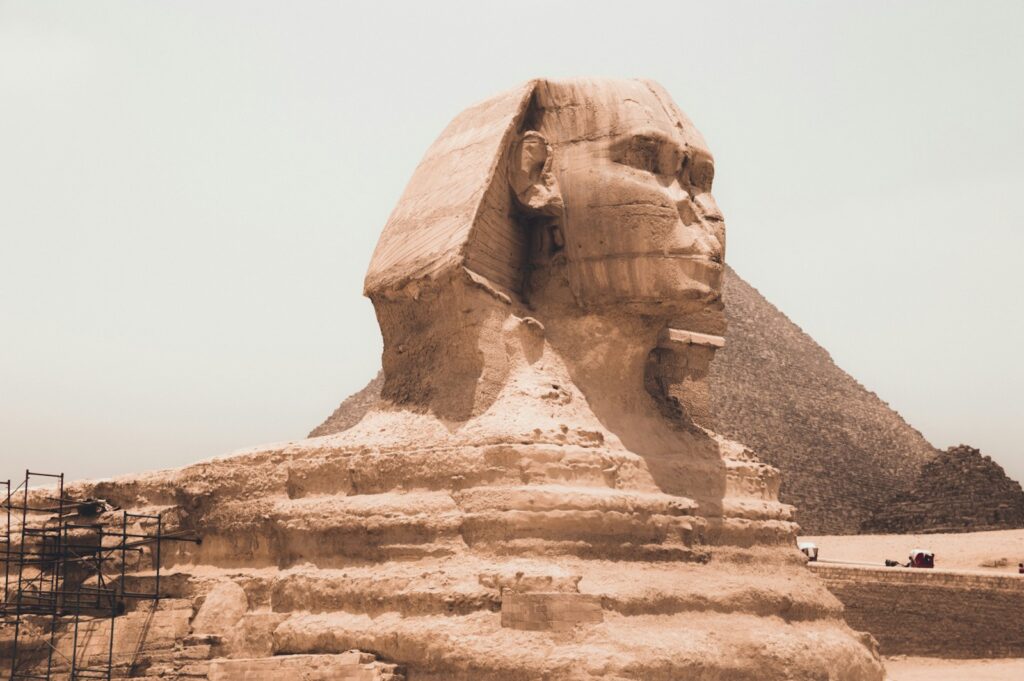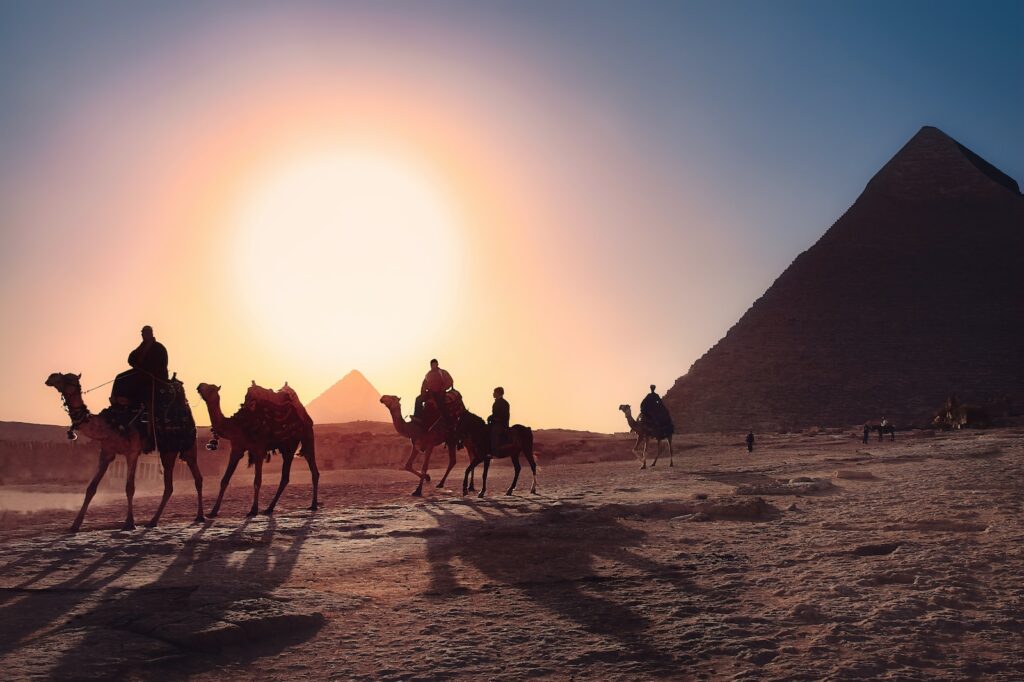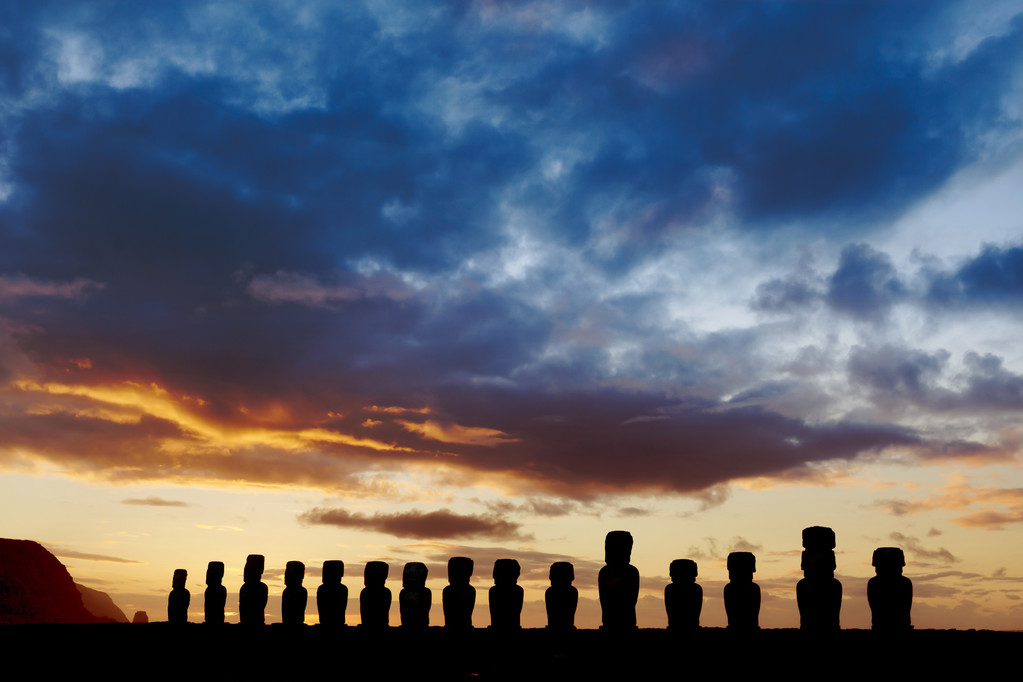Introduction
Welcome to a journey through time. Together, we will explore the oldest civilizations in history, those remarkable societies that have shaped the world as we know it today. Like intrepid explorers, we’ll delve deep into the forgotten footprints of these civilizations, tracing their impact on our modern societies.
The study of ancient societies is not merely an academic endeavor, but a quest to understand our collective past. By examining the oldest civilizations, we can gain invaluable insight into human nature, societal development, and cultural evolution. We reveal the layers of our history, unearthing the roots of our modern world. We learn from our past in order to navigate our future, and as such, the importance of understanding and preserving these ancient civilizations cannot be overstated.
The aim of this article is twofold. Firstly, it seeks to shed light on the vibrant tapestry of human history, highlighting the intricate designs woven by civilizations of yesteryears. Secondly, it hopes to inspire a sense of wonder and respect for these societies that have left indelible marks on the sands of time.
There is something humbling about standing in the shadow of history, feeling the ebb and flow of countless lives and stories that have come before us. Through this exploration of ancient civilizations, we hope to ignite that feeling in you, to spark your imagination and curiosity. This is more than a voyage through time; it is an exploration of ourselves, our roots, and our shared heritage.
As we embark on this journey, we will visit places that have been silent witnesses to the rise and fall of empires. We will cross vast deserts, navigate mighty rivers, and scale towering mountains. We will delve into the heart of Mesopotamia, the cradle of civilization; stand in awe at the vast monuments of ancient Egypt; unravel the mysteries of the Indus Valley Civilization; and marvel at the grandeur of the Roman Empire.
Ancient civilizations provide a mirror to our modern societies. They challenge our perceptions, make us question our assumptions, and encourage us to learn from their triumphs and mistakes. In the end, the study of these civilizations is not just about understanding history; it’s about understanding humanity.
So, come with us as we traverse the annals of time, exploring the forgotten footprints of the oldest civilizations. Let’s immerse ourselves in their stories, learn from their wisdom, and honor their memory. Let’s embark on this fascinating journey together, and in doing so, discover more about our own place in history.
The Importance of Studying the Oldest Civilizations

When we delve into the pages of history, we are not merely exploring the past, but unraveling the threads that bind us to our ancestors. The study of the oldest civilizations is akin to embarking on a grand journey to the roots of humanity. This journey brims with invaluable lessons, profound knowledge, and striking insights that can illuminate many aspects of our present world.
Imagine, for a moment, a gigantic puzzle that represents human history. The oldest civilizations are the corner pieces; they form the foundational structure upon which the entire image is built. By studying these foundational pieces, we gain an understanding of the fundamental aspects of humanity: how societies evolved, how cultural norms were established, the origins of systems of governance, and the roots of technological innovation, to name just a few.
- Lessons from the past: The ancient civilizations were not just about epic tales of kings and warriors or grand architectural marvels. They were complex societies with intricate systems of governance, advanced technologies, and rich cultures. These societies made significant strides in various fields like agriculture, mathematics, and astronomy, paving the way for future advancements. Understanding how these civilizations flourished can provide us with valuable lessons on sustainable living, effective leadership, and peaceful coexistence.
- Insights into human nature: The study of ancient civilizations also provides fascinating insights into human nature and behavior. It helps us understand how humanity has responded to challenges and adversities throughout history, providing vital clues about our resilience, adaptability, and innovation.
- Context to current global issues: Many of the challenges we face today – from political conflicts to environmental crises – have historical roots. By studying our past, we can gain a better understanding of these issues and perhaps find solutions that have been tried and tested by our ancestors.
Finally, studying the oldest civilizations is not just about learning from the past, but also about preserving it. As the great philosopher George Santayana famously said, “Those who cannot remember the past are condemned to repeat it.” Our past is an inexhaustible treasure trove of wisdom and knowledge, and it is our responsibility to protect and preserve it for future generations.
We must strive to ensure that the footprints of these ancient civilizations are not forgotten but are remembered and revered. In this way, we can continue to learn and evolve, drawing inspiration from the ancient societies that laid the foundation for our modern world. The importance of studying the oldest civilizations cannot be overstated. It is, in essence, the study of ourselves and our journey through time.
Mesopotamia: The Cradle of Civilization

If you’ve ever wondered where it all began, look no further than Mesopotamia. This ancient civilization, nestled between the Euphrates and Tigris rivers, is often referred to as the ‘cradle of civilization.’ Not because it had the cushiest of baby beds, but because it was here that human society as we know it first took root.
Mesopotamia’s historical significance is like the sturdy base of a centuries-old tree. It’s where our societal roots first plunged into the fertile soil of collective living, where the seeds of our modern society were first sown.
- Historical Significance: Mesopotamia’s story begins around 3100 BC, making it one of humanity’s earliest civilizations. This civilization gave birth to some landmark innovations, such as the wheel, writing, and even the concept of time as we understand it.
- Advancements and Achievements: Mesopotamians weren’t just ahead of the curve; they were drawing the curve. They created the first legal code, developed complex irrigation systems, and constructed inspiring architectural wonders like ziggurats, resembling the step pyramids of Egypt.
- Impact on Modern Civilization: The legacy of Mesopotamia can’t be overstated. Our modern systems of law, governance, and even urban planning bear the indelible fingerprints of this ancient civilization.
Their advancements in various fields echo in our present-day societies. For instance, cuneiform, the writing system of Mesopotamia, was the first known form of communication beyond the use of pictograms. The wedge-shaped strokes inscribed on clay tablets are the rudimentary ancestors of our modern alphabets.
What’s more, the Mesopotamians were keen observers of the heavens. Long before Neil Armstrong made his giant leap for mankind, the Mesopotamians had developed a comprehensive understanding of astronomy. The division of a year into two seasons, summer and winter, was a Mesopotamian concept. In fact, the modern 60-minute hour and 60-second minute are based on their sexagesimal system.
Their ingenuity didn’t stop at the stars. The advanced irrigation techniques of Mesopotamia transformed an unforgiving desert into arable land, setting the stage for agricultural revolutions in other parts of the world.
In retrospect, the legacy of Mesopotamia is like a winding river, flowing through the ages and nourishing the roots of contemporary civilizations. Its contributions to humanity are as vast as the desert plains it once dominated. And though its physical footprints may have faded, its impact is etched permanently into the annals of human history.
Ancient Egypt: A Glimpse into the Past

Stepping back into the sands of time, we find ourselves in the heart of Ancient Egypt, a civilization renowned for its technological advancements and majestic pyramids. Truly, the grandeur and enigma enveloping this civilization beckons us to delve deeper into its forgotten footprints.
Let’s start with the most iconic aspect of Ancient Egypt – the pyramids. These majestic structures are no less than architectural marvels, engineered with precision and grandeur that still baffle modern architects. The Great Pyramid of Giza, for instance, stands as the only one of the Seven Wonders of the ancient world still largely intact. But beyond their grandeur, these pyramids also held a deeply spiritual significance for the ancient Egyptians, reflecting their strong belief in the afterlife.
- Their intricate design and immense size were aimed at safeguarding the deceased’s journey to the afterlife.
- The positioning of these pyramids, often aligned with celestial bodies, speaks volumes about the Egyptians’ knowledge of astronomy.
- Moreover, the hieroglyphs adorning the pyramid walls stand as testament to the Egyptians’ sophisticated writing system and their profound philosophical and religious beliefs.
Moving beyond the pyramids, Ancient Egypt was also home to a plethora of other technological advancements. The Egyptians were pioneers in various fields such as mathematics, medicine, and engineering, thereby shaping the course of human knowledge and civilization. Furthermore, the invention of practical tools and systems, such as the calendar and irrigation mechanisms, underscore their practical ingenuity and foresight.
- For instance, the Edwin Smith Papyrus, dated to the 17th century BCE, is one of the earliest known medical texts. It consists of surgical cases and treatments, illustrating the Egyptians’ advanced knowledge in medicine.
- Similarly, their creation of a 365-day calendar, aligned with the solar year, formed the basis for the modern calendars we use today.
- Moreover, their innovative agricultural practices, particularly their irrigation systems, were essential for their survival and prosperity in the Nile Valley.
In conclusion, Ancient Egypt stands as a civilization that was far ahead of its time. From their awe-inspiring pyramids and tombs to their advancements in various fields, the Egyptians have left an indelible mark on human history.
Their civilization truly offers a glimpse into the past, inviting us to appreciate their ingenuity and learn from their wisdom. As we continue to unravel the mysteries and secrets of Ancient Egypt, we honor their legacy and reaffirm the importance of preserving and studying these remarkable footprints of our past.
Indus Valley Civilization: The Enigma of South Asia

One of the more mysterious but equally fascinating civilizations of antiquity is the Indus Valley Civilization, also known as the Harappan Civilization. Nestled in the heartland of South Asia, this civilization remains wrapped in enigma due to the complexities of its undeciphered script, leaving modern scholars with a tantalizing, puzzling and yet unbroken code.
The Indus Valley Civilization is particularly known for its urban planning, with cities such as Mohenjodaro and Harappa demonstrating an extraordinary level of civic organization and technological innovation. Their impressive achievements include:
- The development of sophisticated urban centers, complete with advanced drainage systems, public baths, and brick-built houses.
- The creation of a standardized system of weights and measures, indicative of an economic system that thrived on trade.
- The production of distinctive seals, showcasing the artistic prowess of the civilization and likely serving important socio-religious functions.
Despite these remarkable achievements, the study of the Indus Valley Civilization presents unique challenges. The lack of deciphered written records hampers our understanding of their political structures, religious beliefs, and social organization. Yet, these uncertainties make the Harappan society all the more intriguing, beckoning historians and archaeologists to delve deeper into its mysteries.
The Indus Valley Civilization, though lesser-known in comparison to its Egyptian and Mesopotamian contemporaries, is a testament to the ingenuity and adaptability of human societies. Its advanced urban planning and infrastructure remind us that the ancient people of the Indus Valley were pioneers in their own right, setting the groundwork for future civilizations to build upon.
However, the fall of the Indus Valley Civilization remains as enigmatic as its rise. Theories range from climate change and river course shifting to invasion and socio-economic transformations. Yet, the exact cause of its decline is still a matter of debate among scholars. The inability to conclusively pinpoint the reason for the civilization’s collapse serves as a sobering reminder of the impermanence of even the most advanced societies.
In conclusion, the Indus Valley Civilization serves as a remarkable chapter in the annals of human history. Though shrouded in mystery, it continues to captivate the imagination of scholars and laypeople alike, inviting us to unravel its forgotten footprints. The enduring legacy of the Harappan society underscores the value of preserving and studying these ancient civilizations, providing invaluable lessons in cultural resilience, innovation, and adaptation to changing environmental conditions.
The Rise and Fall of the Roman Empire

The Roman Empire, one of the most formidable political entities in the tapestry of human history, stands as a testament to the heights of sophistication, unity, and power that society can reach. But woven into this tale of grandeur are threads of decline and fall, symbolizing the ephemeral nature of even the mightiest of empires.
The rise of the Roman Empire was a slow and steady process that began with the establishment of the Roman Republic in 509 BC. Through a series of military conquests, diplomatic maneuvers, and strategic alliances, Rome expanded its influence across the Mediterranean region. Its dominance was further solidified with the advent of the Roman Empire in 27 BC, marking the start of a golden era of expansion and prosperity.
- At its zenith, the Roman Empire stretched over three continents, encompassing vast territories across Europe, Asia, and Africa. This made Rome the epicenter of cultural and technological advancements, leaving a lasting legacy that continues to shape modern society.
- Among the many cultural contributions of the Romans, the development of law and governance stands out. The concept of ‘innocent until proven guilty’, a cornerstone of most legal systems today, was a Roman innovation.
- Technologically, the Romans were master builders and engineers. Their aqueducts, roads, and architectural marvels like the Colosseum convey the magnitude of their achievements.
Despite these accomplishments, the Roman Empire couldn’t defy the sands of time. The fall of the Roman Empire was a prolonged process characterized by a complex web of factors.
- The economic instability caused by overspending on military, corruption, and debasement of the Roman currency diluted the strength of the empire.
- Social issues including political instability, moral decadence, and public health crises further exacerbated the decline.
- External pressures from barbarian invasions and the split of the empire into Eastern and Western halves were the final nails in the coffin, leading to the fall of the Western Roman Empire in 476 AD.
The Roman Empire, in its rise and fall, serves as a mirror reflecting the complexities of human society. To walk through the ruins of Rome is to traverse centuries of triumph and tragedy, of innovation and decay, and of unity and fragmentation. In studying this ancient civilization, we come to understand more deeply the cyclical nature of history, and the importance of adaptation, resilience, and foresight in the survival of societies. This understanding is as valuable today as it was in antiquity, and the echoes of Rome’s legacy continue to resonate in our modern world.
Lessons Learned and Their Relevance Today
Unearthing the past is not simply an intriguing endeavor; it is a journey into the very heart of human existence, a profound exploration of who we are and where we have come from. Each footprint left by ancient civilizations provides us with irreplaceable knowledge and invaluable lessons. The oldest civilizations, despite existing thousands of years ago, have much to teach us today.
Primarily, ancient civilizations impart vital socio-cultural lessons. As we delve into the ruins of Mesopotamia or walk through the enigmatic structures of the Indus Valley, we are confronted with the resilient spirit of humanity. Our ancestors faced adversities, adapted, and thrived – a testament to human resilience. These civilizations also remind us that societal harmony is a product of cultural diversity, ethical governance, and equitable resource distribution.
- Cultural Diversity: Ancient civilizations like Rome and Egypt were melting pots of various cultures. This diversity led to a richer societal fabric that fostered innovation and progress.
- Ethical Governance: The stability of these civilizations was rooted in fair and just governance, highlighting the age-old necessity for ethical leadership.
- Equitable Resource Distribution: These civilizations thrived due to their effective resource management systems, emphasizing the importance of equity in societal development.
Moreover, ancient civilizations offer technological and scientific insights. The architectural marvels of Egypt, irrigation systems of Mesopotamia, and urban planning of the Indus Valley are all testaments to their superior knowledge and advanced methodologies. These achievements inspire modern technological advancements and encourage us to push the boundaries of our potential.
- Egypt: The pyramids challenge our understanding of architecture and engineering.
- Mesopotamia: The civilization’s water management systems showcase their advanced understanding of hydrology.
- Indus Valley: The city planning and drainage systems highlight the civilization’s planning and engineering prowess.
Finally, studying these civilizations injects a sense of urgency for preservation. The indiscriminate loss of these ancient heritages to neglect, conflict, and climate change is a loss of our shared human history. It underscores the importance of conserving these footprints to enable future generations to learn from them.
In conclusion, the lessons we learn from the oldest civilizations are not just remnants of the past, they are living wisdom. They guide us in navigating our present and shaping our future. As we continue to decipher the mysteries of these ancient societies, let us remember that each discovery is a step towards a deeper understanding of ourselves.
Conclusion
As we tread lightly on the faded footprints of the past, we are led to a profound revelation of our shared heritage. The journey through the annals of history, tracing the rise and fall of the oldest civilizations, instills in us a sense of awe and appreciation for our ancestors. These civilizations, from Mystical Mesopotamia to Enigmatic Egypt, the Intricate Indus Valley, and the Revered Roman Empire, have each left an indelible mark on the tapestry of human history.
Delving into the myriad depths of these ancient societies allows us to unravel the shared story of humanity. A story filled with awe-inspiring advancements, astounding achievements, tragic downfalls, and lessons steeped in wisdom. They serve as an invaluable guide in our quest to understand our past and shape our future.
- Mesopotamia, known as the ‘cradle of civilization,’ gave birth to innovations such as writing, the wheel, and the calendar, that have shaped the course of history.
- Ancient Egypt offers us a glimpse into one of the most fascinating cultures of antiquity, assuring us of the incredible potential of human ingenuity and creativity.
- The Indus Valley Civilization, though lesser-known, is a testament to the power of organization and city planning, and the enduring mystery of their undeciphered script reflects the challenges of studying ancient societies.
- The Roman Empire, a paragon of power and influence, provides a cautionary tale of the impermanence of power and the inevitability of change.
These ancient civilizations serve as a vibrant mosaic of our shared past, each contributing a distinct hue to the spectrum of human history. Their lessons reach out to us from the distant past, bearing relevance even in today’s digital age. They remind us of the importance of unity in diversity, the perils of unchecked power, and the necessity of sustainability.
Preserving and studying these oldest civilizations is a duty we owe to our ancestors and posterity alike. These civilizations are our only tangible link to the past, a treasure trove of knowledge that we must strive to conserve for future generations. They are the silent teachers of humankind, their voice echoing through the winds of time, offering wisdom and guidance.
We must continue the journey of exploring and learning from these ancient societies, for it is through understanding our past that we can truly comprehend our present and influence our future. So, let’s keep the flame of curiosity alive, let’s keep digging, exploring, and reconstructing the glorious chapters of our past, for every bit of knowledge unearthed is a step towards wisdom. As we stand on the shoulders of these ancient giants, we are reminded that the study of these oldest civilizations is not simply an academic pursuit, but a voyage of self-discovery, a journey towards understanding the essence of humanity itself.

